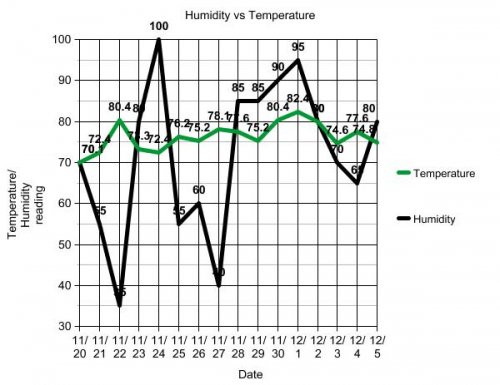Chase
Chameleon Enthusiast
Experiences Breeding Calumma oshaughnessyi
Environmental Inputs:
While working with this species, I know that there is not much information about them, and so when I started caring for them, I went with the route of keeping them similar to how one would keep Calumma parsonii. For about seven to ten days, lows dipped as low as the mid 30s, and then highs rose to as high as 85 (outside temperatures, before and after the 7-10 day span[to current time]). I have kept the C. oshaughnessyi inside thus far, and have collected environmental conditions around them.
During the times where the lows were dropping into the 40s, a space heater was provided to keep ambient temperatures in the low to mid 60s. Highs under the heat sources maxed at 84, with temperatures as low as 70 in other areas of the enclosure.
Humidity ranged from 50 to 100 percent, with a significant drop at night. The C. oshaughnessyi enjoy their water. I spray them in intervals of at least 3 minutes, and run a dripper shortly after spraying. I’ve learned that they usually don’t drink until after being directly sprayed and readily drink the water being sprayed on them and the water coming from the drip.
Breeding Behavior:
About a week ago, I observed interesting breeding behavior. I noticed that it was sparked shortly after the misting and drip. The male fired up, and just sat around. A few days after that, I noticed the pair hanging around each other, even at some points sitting with contact between the two. Finally a couple of days after, I witnessed the male becoming more reproductively aggressive (puffing up, head bobbing, etc.). He was following the female around the cage, and was just very active. The female, on the other hand, kept normal behaviors. She pretty much stayed sedetary and only became active when being chased around the cage.
Copulation lasted about five minutes, and after, the female did not change color. I have left the pair together to see if there are any other breeding attempts. Along with that, there was no outward aggression towards the male from the female, nor from the male to the female. They hung out around each other post-copulation.
Other Behavioral observations:
Will bask if given the opportunity, in fact they will hang out around the basking spot for most of the early morning and late afternoon. They (at least from the ones I’ve cared for) usually go for more active food choices. They will not eat things that do not move much. Hornworms were ignored, as well as wax worms. From what I’ve observed, they are not a timid species. They basically just watch me come into the cage, and readily eat and drink in front of me.
Chase
I will be glad to answer questions, as well as will keep everyone updated!









